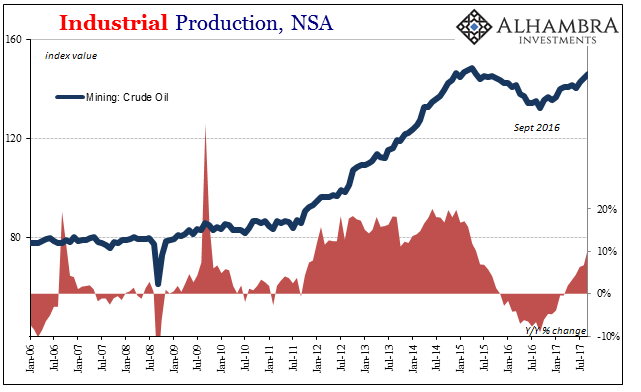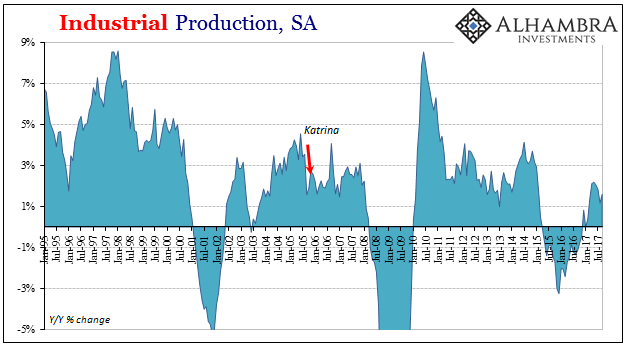Industrial Production rose 1.6% year-over-year in September 2017. That’s up from 1.2% growth in August, both months perhaps affected to some degree by hurricanes. The lack of growth and momentum, however, clearly predated the storms. The seasonally-adjusted index for IP peaked in April 2017, and has been lower ever since. This pattern, the disappointment this year is one we see replicated nearly everywhere on both sides (supply as well as demand) of the global economic equation.
To further emphasize the non-weather nature of recent weakness, the Federal Reserve revised lower estimates for both July and August. The initial index value produced a 2.4% gain for July, which was the highest since January 2015 and at the time at least moving in the right second derivative direction. It has been revised instead to just 1.8% growth, and merely in line with this recent trend. The rate for August was recalculated to 1.2% from 1.5%.



Capacity utilization in both those months was reduced, too. The original figures suggested 76.9% utilization in July, which would have been the highest since April 2015 and still indicating a positive trend. Instead, the Fed now estimates the rate was 76.5% and no further growth, starting again what is now more than a few months in the wrong direction.

This weakness is occurring despite the mining sector particularly for crude oil again contributing significantly on the growth side. After reaching a low point last September, growth in production here is now up sharply from that trough. The IP index suggests production levels for domestic crude are now 10% above that low point and still rising.

On the other side, the most significant drag continues to be in the auto sector. Motor vehicle assemblies only gained by a small amount in September above August, and remain closer to the very low level of production found at the larger-than-normal factory shutdowns in July. The Fed estimates that domestic production was just 10.84 million SAAR last month compared to 10.65 million the month before and 10.13 million in July. At its peak in July 2015, production was just about 13 million units.














Leave A Comment